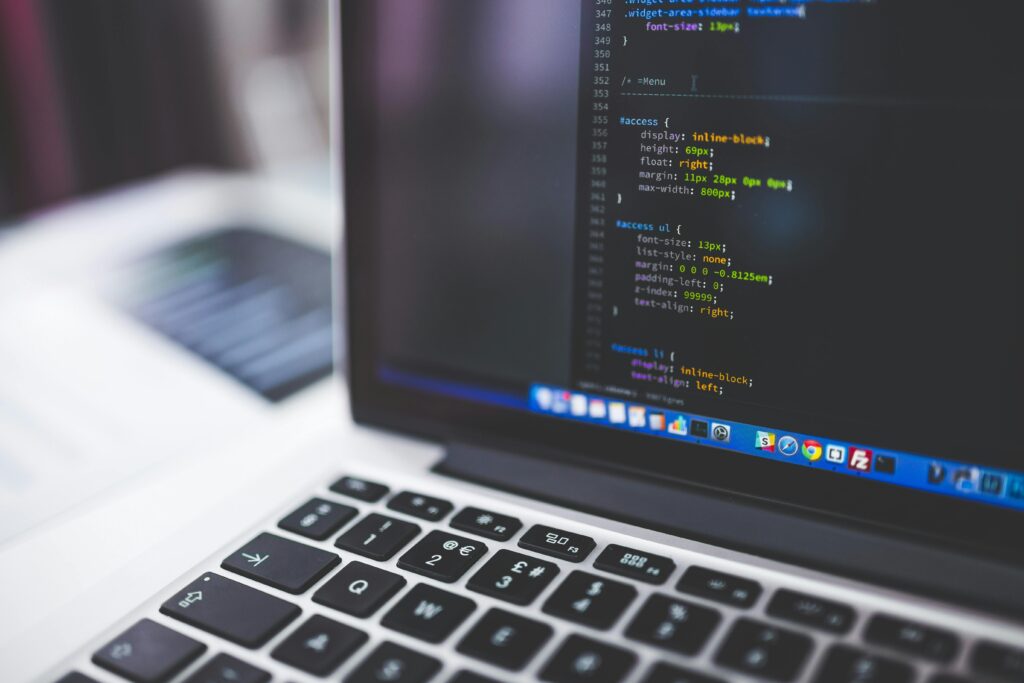
In a world where technology evolves at lightning speed, organizations are forced to modernize their outdated legacy environments. They must face this challenge because current systems often no longer meet today’s requirements. This can be due to technical reasons but is sometimes also related to new IT-related laws and regulations. Additionally, new systems are often necessary to remain competitive. Organizations aiming for digital transformation sometimes struggle to know where to start. A legacy applications audit is always a good starting point, and in this blog article, you’ll learn how to approach it.
Legacy applications have often been used within organizations for a very long time. Often, these are mission-critical applications that play an essential role in the continuity and growth of an organization. In many cases, these are custom applications precisely tailored to specific core tasks that must be carried out within the organization. Although this software often still functions well, in the long term it can become an obstacle for the organization. These applications are often not compatible with modern cloud technology, are prone to failures, expensive to maintain, and at the same time pose a security risk due to outdated code and the absence of adequate cybersecurity.
With the above challenges in mind, it is therefore wise to choose to modernize a legacy environment so that your organization is fully prepared for the future and can operate decisively. To make the entire process of modernizing and migrating to a new environment successful, it is advisable to start with an audit to first map out the weak and strong points of the current environment. Based on these results, an audit makes clear which requirements the new environment must meet.
An audit process consists of nine steps, and by going through these chronologically, you create a good foundation from which your organization can make the process of modernizing and migrating legacy applications a success. If you do not perform an audit, you do not know exactly what the weak spots are in the existing environment and what you need to improve in the new environment. All the more reason to get started and carefully carry out all the steps in the audit process.
1. Inventory of legacy systems
The first step in the process is to take stock of the existing environment. This involves not only software and hardware but also an overview of all operating systems, databases, middleware, and integrations with other (external) systems. For which systems is documentation available, and what information is only known to IT staff? This creates a complete picture of the current environment. There are automated tools that help with this inventory. Relying solely on a fully manual check risks overlooking certain components.
For a complete picture, it is also useful to have conversations with employees on the work floor and ask which tools they use. This may reveal the use of shadow IT. Examples include the use of loose USB sticks and popular cloud services such as Dropbox and WeTransfer. The use of shadow IT leads to significant security risks within organizations. A modernized IT environment must fully support staff in performing their tasks so that the use of shadow IT is no longer necessary.
2. Performance analysis of technical architecture
The second step involves checking whether the current infrastructure is capable of properly performing all essential tasks. This includes assessing speed, efficiency, user-friendliness, scalability, and the ability to integrate with other (new) systems. Future developments are also taken into account: will the current environment still be able to support all organizational processes going forward?

3. Collecting user experiences
It is important to involve the staff who work with the current environment in the audit process. What do they think of the existing system? What limitations do they face? How user-friendly is the current environment? What improvements would they like to see in the new environment? Additionally, discussions should be held with management and other stakeholders who work directly or indirectly with the current system. What data is needed for (periodic) reporting? To gather the right feedback, an organization might also consider setting up working groups. Involving staff at this stage significantly increases the likelihood that the new environment will be more readily accepted later on.
4. Assessing the security level
Security is almost always a challenge with legacy systems. Due to the age of the code, there is often no possibility to install adequate security features and patches. As a result, the environment is vulnerable to both internal and external attacks. When assessing the security level, we examine the architecture, applied code, encryption capabilities, and how access to applications and data is managed.
It is also important to look at backups: how they are stored and whether they are sufficiently protected from the current environment. Cybercriminals who deploy ransomware typically start by encrypting backups. To identify vulnerabilities in the current environment, penetration tests can be performed. In this process, an ethical hacker attempts to gain access to systems, databases, and backups in various ways. This is an excellent method to map out vulnerabilities in the existing environment.
5. Identifying risks
Another important part of the audit process is identifying current and future risks. What are the consequences for the organization’s progress if the current infrastructure remains unchanged? It is likely that sooner or later the organization will face issues that threaten the continuity of vital business functions. Common risks associated with a legacy environment include limited scalability, lack of adequate cybersecurity, and limited ability to integrate with other systems. We should also not forget that IT personnel with deep knowledge of the legacy systems may leave the organization due to retirement or moving to another employer.

6. Compliance and regulations
Today, organizations face many IT-related laws and regulations. The key question is whether the current infrastructure can meet these requirements now and in the future. Almost every organization collects personal customer data, and under the European privacy law GDPR (General Data Protection Regulation), these laws must be observed. Personal data must be securely stored in IT systems so it cannot be easily viewed or shared. This places demands on the level of cybersecurity. Does the current environment provide sufficient capabilities now and in the future to adequately manage this security?
For reliable and sound business operations, organizations aim to obtain certifications. Examples include ISO 9001 (quality management) and ISO 27001 (information security). Are the current legacy systems capable of meeting the certification requirements? Especially certifications related to information security set high standards for IT infrastructure. The likelihood that an outdated environment can comply is generally very low.
7. Cost calculation
Another important part of the audit process is calculating all costs associated with the legacy environment. This is the Total Cost of Ownership (TCO), including expenses for IT staff, maintenance, infrastructure, and energy. Especially outdated hardware consumes a lot of energy, which translates into high electricity bills. An aging environment is prone to failures and requires extensive maintenance, leading to higher labor costs. We should also not forget the costs related to downtime. When a production process stops due to faulty legacy systems, it results in significant financial losses. Creating integrations from a legacy environment to modern systems is often quite difficult. If possible, it requires considerable time and money. The same applies to making and restoring backups, which is a labor-intensive task with older systems.
When choosing to apply modern cloud technologies during digital transformation, you will experience many benefits. Using cloud services means you don’t need to purchase hardware yourself. The cloud provider is responsible for hardware acquisition and management, saving you costs and freeing up budget for other projects. Cloud solutions are generally easier to use: whether it’s making and restoring backups or integrating with other systems, these tasks are usually much simpler.
Of course, at this stage, you should also consider the costs related to modernizing and migrating legacy applications to a modern (cloud) platform. The final costs of this process are not yet known, but it’s good to make an initial estimate. This is often quite feasible when using cloud providers’ services, which mostly operate on a subscription model based on usage. This makes it easier to estimate costs based on current and future use of cloud resources.

8. Reporting findings
It is important to document all the above findings in a report. This creates a clear overview of the strengths and weaknesses of the current environment, helping the organization understand which areas need attention. Also include the costs and benefits related to the digital transformation. While there are expenses involved in the transformation process, these are balanced by the potential for significantly improved business results in the future through more efficient processes and cost savings. The report should also include a forward-looking perspective: which developments in legislation and technology need to be taken into account?
9. Presentation to stakeholders
The final step in the audit process is presenting the findings to all stakeholders within the organization. Management plays a key role in this. It is the responsibility of the report authors to inform management thoroughly, as they hold the authority to allocate budget, personnel, and time to ensure the success of the transformation process. Besides management, everyone in the organization must ultimately be convinced of the necessity of the digital transformation. The presentation should also address the timeline for the transformation process and which parts of the legacy environment will be addressed first.
Stay in control of your legacy systems – get expert help
After reading this step-by-step plan, consider bringing in an external expert to help conduct an audit of your legacy applications. Choosing an external party is advisable because they can provide an objective perspective and approach your legacy environment with valuable distance. You can find such expertise at Netrom Software, an IT service provider active since 1999 as a nearshore partner, with extensive experience in modernizing and migrating legacy environments.